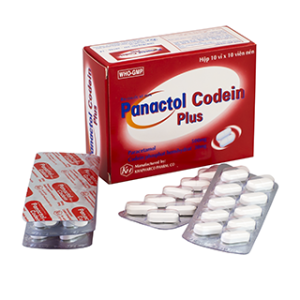We deliver to you every day from 7:00 to 23:00
The best discounts this week
Every week you can find the best discounts here.
Prescription Painkillers: A Comprehensive Guide to Safe Use
Prescription painkillers are medications that are used to manage moderate to severe pain. They can provide relief from a range of conditions such as post-surgical recovery, chronic pain, and injuries. However, due to their potency and the risks associated with misuse, it’s essential to use these medications under strict medical supervision. In this guide, we’ll dive into what prescription painkillers are, their types, how they work, potential side effects, and safety tips for using them effectively.

What Are Prescription Painkillers?
Prescription painkillers are medications that require a doctor’s prescription due to their strength and potential for misuse. They are primarily used to treat moderate to severe pain that over-the-counter (OTC) medications cannot manage effectively. These drugs work by altering how the brain and nervous system respond to pain signals, providing relief to those in need.
Types of Prescription Painkillers
Prescription painkillers can be broadly categorized into two types: opioids and non-opioid painkillers.
-
Opioid Painkillers: These are some of the most potent painkillers available. Common opioids include:
-
Oxycodone (e.g., OxyContin)
-
Hydrocodone (e.g., Vicodin)
-
Morphine
-
Fentanyl
-
Codeine
Opioids work by binding to specific receptors in the brain and spinal cord to block pain signals, providing significant pain relief. However, they come with a high potential for dependence and addiction.
-
-
Non-Opioid Painkillers: These are less potent but still effective for managing pain. Examples include:
-
Acetaminophen (e.g., Tylenol)
-
NSAIDs (Non-Steroidal Anti-Inflammatory Drugs) like ibuprofen and naproxen.
These medications work by reducing inflammation or altering the body’s pain response without the addictive risks associated with opioids.
-

How Do Prescription Painkillers Work?
Prescription painkillers work in various ways depending on the type of drug. Opioids, for example, interact with opioid receptors in the brain and spinal cord to block the perception of pain. They also affect the reward system in the brain, which is why they have a risk for dependence and abuse.
On the other hand, NSAIDs and acetaminophen target specific enzymes in the body responsible for pain and inflammation. By inhibiting these enzymes, these drugs reduce the swelling and discomfort associated with injuries, arthritis, and other painful conditions.
Risks of Prescription Painkillers
While prescription painkillers are effective, they come with a range of potential side effects and risks, particularly when misused. Here are some of the most significant concerns:
1. Addiction and Dependence
One of the primary concerns with opioid painkillers is their potential for addiction. Over time, the body can develop a tolerance to the medication, meaning that higher doses are required to achieve the same effect. This can lead to physical dependence and addiction, where the individual feels compelled to continue using the drug even if it’s no longer medically necessary.
2. Overdose Risk
Taking large doses of opioid painkillers or mixing them with other substances (like alcohol or benzodiazepines) can lead to overdose, which can be fatal. Signs of an overdose include slow or irregular breathing, pinpoint pupils, and loss of consciousness.
3. Side Effects
Prescription painkillers, especially opioids, can cause various side effects, including:
-
Constipation
-
Drowsiness or fatigue
-
Nausea and vomiting
-
Dizziness or lightheadedness
These side effects can be uncomfortable and interfere with daily activities. For opioids, the sedative effects can also impair cognitive function, leading to risky behaviors.
How to Use Prescription Painkillers Safely
To minimize the risks associated with prescription painkillers, it’s essential to follow your healthcare provider’s instructions carefully. Here are some key tips for safe usage:
1. Follow the Dosage Instructions
Take painkillers exactly as prescribed by your doctor. Never take more than the recommended dose or increase the frequency without consulting your doctor. Doing so can increase the risk of side effects and addiction.
2. Avoid Mixing with Other Substances
Do not mix prescription painkillers with alcohol, benzodiazepines, or other medications without consulting your healthcare provider. Combining these substances can increase the risk of serious side effects, including overdose.
3. Monitor for Side Effects
Keep track of any side effects or unusual symptoms while using prescription painkillers. If you experience persistent side effects or feel that the medication is no longer effective, consult your doctor. They may adjust your dosage or recommend an alternative treatment.
4. Use the Shortest Duration Possible
Prescription painkillers, especially opioids, should be used for the shortest time necessary. Prolonged use increases the risk of dependence, addiction, and other complications. For chronic pain, ask your doctor about non-opioid alternatives.

Alternatives to Prescription Painkillers
If you’re concerned about the risks associated with prescription painkillers, there are several alternative treatments available for managing pain:
1. Physical Therapy
Physical therapy can be highly effective for managing pain caused by injuries, arthritis, and other musculoskeletal conditions. By strengthening muscles and improving flexibility, physical therapy can reduce reliance on painkillers.
2. Over-the-Counter Medications
For mild to moderate pain, NSAIDs like ibuprofen (Advil) or naproxen (Aleve) and acetaminophen (Tylenol) may be effective alternatives to prescription painkillers. These medications are available without a prescription and carry a lower risk of addiction.
3. Mind-Body Techniques
Techniques like meditation, yoga, and cognitive-behavioral therapy (CBT) can help manage chronic pain by teaching individuals how to alter their perception of pain and reduce stress, which can exacerbate pain.
Frequently Asked Questions (FAQs)
1. Are prescription painkillers safe?
Prescription painkillers are safe when used as directed by a doctor. However, misuse or prolonged use increases the risk of side effects, addiction, and overdose. Always follow your doctor’s instructions and use the medication for the shortest time necessary.
2. How can I avoid addiction to prescription painkillers?
To avoid addiction, only take painkillers as prescribed, avoid taking higher doses than recommended, and do not mix them with alcohol or other substances. If you’re concerned about the risk of addiction, discuss alternative treatments with your doctor.
3. Can I take prescription painkillers for long-term pain?
For chronic pain, doctors may recommend other treatments, such as physical therapy or non-opioid medications. Opioids should be used only for short-term pain management due to their high risk for dependence.
4. What should I do if I miss a dose of painkillers?
If you miss a dose of prescription painkillers, take it as soon as you remember unless it’s almost time for your next dose. Do not take two doses at once to make up for a missed dose.
5. Can prescription painkillers interact with other medications?
Yes, prescription painkillers can interact with other medications, including blood thinners, antidepressants, and antihistamines. Always inform your doctor about all the medications you are taking to avoid harmful interactions.
Conclusion
Prescription painkillers are an essential tool for managing pain, but they come with significant risks, particularly when misused or taken for long periods. By following your doctor’s guidelines, using the lowest effective dose, and exploring alternatives, you can reduce the risks associated with these medications while still achieving the pain relief you need. Always consult your healthcare provider for advice tailored to your individual health needs.
For more information on pain management options, visit our Pain Relief Resource Center.











